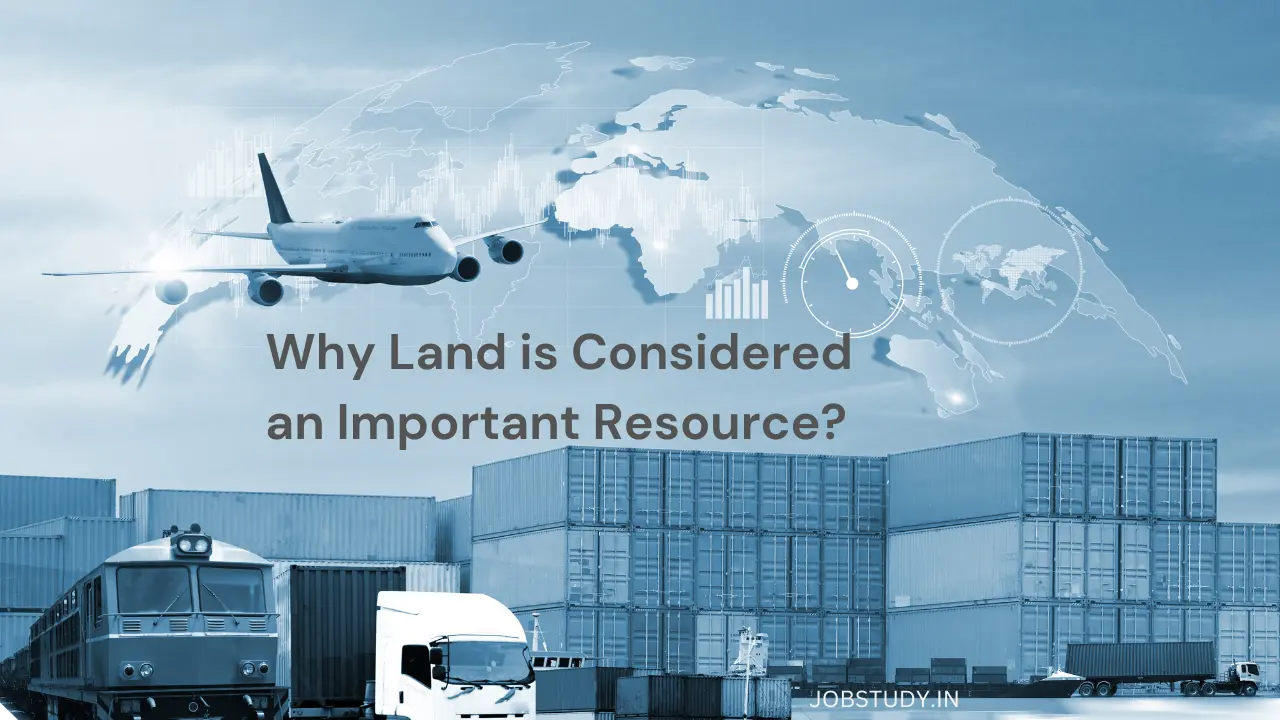Land is one of the most valuable and precious resources that we have on our planet. It is a finite and limited resource that plays a critical role in human survival, economic development, and environmental sustainability.
In this article, we will discuss why land is considered an important resource and how it affects our lives.
Why Land is Considered an Important Resource?
What is land?
Land refers to the surface of the earth that is not covered by water, including continents, islands, and other natural formations. It is a complex and diverse system that consists of various components, such as soil, vegetation, water, and minerals, that interact with each other in intricate ways.
Importance of land for human survival
Agriculture and food production
Land is essential for growing crops and raising livestock, which are the primary sources of food for humans. Agricultural land provides us with grains, fruits, vegetables, meat, and dairy products that sustain our daily needs and support our health and wellbeing.
Shelter and housing
Land is also crucial for providing shelter and housing for humans. We need land to build homes, offices, schools, hospitals, and other structures that serve our social and economic needs. Without land, we would have no place to live or work, and our quality of life would be severely compromised.
Access to natural resources
Land also provides us with access to a range of natural resources, such as minerals, fuels, and water. These resources are essential for our industrial and technological development and are often finite and limited in supply. Thus, land plays a critical role in determining our access to these resources and our ability to sustainably manage them.
Economic significance of land
Real estate and property development
Land has significant economic value as a commodity that can be bought, sold, and developed for various purposes. Real estate and property development are major industries that rely on land for their growth and profitability. Land prices and values are often influenced by market forces, such as demand, location, and accessibility.
Industry and manufacturing
Land is also important for industrial and manufacturing activities, such as mining, energy production, and transportation. These activities require large amounts of land and resources and can have significant impacts on the environment and human health. Thus, land use planning and management are critical for ensuring their sustainability and minimizing their negative impacts.
Tourism and recreation
Land also plays an essential role in tourism and recreation, which are significant contributors to many national economies. Landscapes, natural attractions, and cultural heritage sites are often the main reasons why people visit different regions and countries, and they generate substantial revenues and employment opportunities.
Environmental significance of land
Biodiversity and ecosystem services
Land is a habitat for a wide variety of living organisms, including plants, animals, and microorganisms. These organisms interact with each other and their environment to form complex ecosystems that provide a range of essential services, such as air and water purification, nutrient cycling, and pollination. These services are crucial for human wellbeing and the sustainability of the planet.
Climate change and carbon sequestration
Land also plays a critical role in mitigating climate change by storing and sequestering carbon from the atmosphere. Forests, grasslands, and wetlands are significant carbon sinks that absorb carbon dioxide from the air and convert it into organic matter. Land use change, such as deforestation and land degradation, can release large amounts of carbon into the atmosphere, contributing to global warming and climate change.
Water cycle and soil conservation
The land is an essential component of the water cycle, as it influences the distribution and quality of water resources. Vegetation cover and soil structure are critical for regulating water flow, reducing erosion and sedimentation, and maintaining water quality. Land use practices, such as irrigation and intensive agriculture, can have significant impacts on the water cycle and soil conservation, affecting both the environment and human livelihoods.
Read Also: Why is the Issue of Sustainability Important for Development?
Land use conflicts and challenges
Land use conflicts and challenges are common in many parts of the world, as competing demands and interests often lead to unsustainable and inequitable use of land resources. Urbanization and land conversion for industrial and infrastructure development often result in land degradation, loss of biodiversity, and displacement of communities. Deforestation and desertification are major environmental problems that threaten the stability and productivity of ecosystems and livelihoods. Land pollution and contamination from various sources, such as industrial activities and waste disposal, pose significant risks to human health and the environment.
Sustainable land use and management
Sustainable land use and management are critical for ensuring the long-term productivity, resilience, and biodiversity of land resources. Land use planning and zoning, conservation and restoration, and integrated landscape approaches are some of the strategies that can promote sustainable land use and management. These strategies aim to balance the social, economic, and environmental dimensions of land use and management, ensuring equitable and participatory decision-making and implementation.
Why Land is Considered an Important Resource? Conclusion
Land is a finite and precious resource that plays a critical role in human survival, economic development, and environmental sustainability. Its importance is reflected in various aspects of our lives, from food production and shelter to tourism and recreation. However, land use conflicts and challenges, such as urbanization and land degradation, pose significant threats to the sustainability and resilience of land resources. Sustainable land use and management strategies are essential for addressing these challenges and ensuring the long-term productivity and viability of land resources.
Why Land is Considered an Important Resource? FAQs
What are some examples of sustainable land use practices?
Some examples of sustainable land use practices include agroforestry, conservation agriculture, and sustainable forest management. These practices aim to promote productivity, biodiversity, and ecosystem services while minimizing negative impacts on the environment and communities.
How does land use affect climate change?
Land use can affect climate change in several ways. For example, deforestation and land degradation can release carbon into the atmosphere, contributing to global warming. Sustainable land use practices, such as reforestation and carbon sequestration, can help mitigate the impacts of climate change by reducing carbon emissions and promoting carbon storage.
What are the impacts of land pollution on human health?
Land pollution can have significant impacts on human health, including respiratory problems, skin irritation, and cancer. Exposure to contaminated soil and water can also lead to a range of health issues, such as gastrointestinal diseases, neurological disorders, and developmental problems.
What is the role of land in tourism and recreation?
Land plays an essential role in tourism and recreation, providing opportunities for activities such as hiking, camping, and wildlife watching. Sustainable tourism and recreation practices aim to minimize negative impacts on the environment and local communities while promoting cultural exchange, education, and conservation.
How can we promote equitable and participatory land use decision-making?
Equitable and participatory land use decision-making involves ensuring that all stakeholders have a voice in the planning and management of land resources. This includes local communities, indigenous peoples, women, and marginalized groups, as well as government agencies, private sector actors, and civil society organizations. Participatory approaches aim to promote transparency, accountability, and social justice in land use decision-making, ensuring that the needs and interests of all stakeholders are taken into account.






